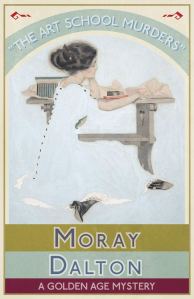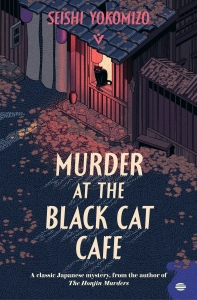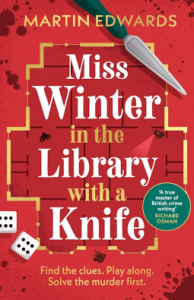 Dean Street Press December is back, hosted again by Liz of Adventures in Reading, Running and Working From Home. The rules are simple – just read and write about at least one book published by Dean Street Press during the month of December! I have several DSP books on the TBR and decided to start with a detective novel by Moray Dalton, a new author for me although I’ve seen other bloggers give her books very positive reviews.
Dean Street Press December is back, hosted again by Liz of Adventures in Reading, Running and Working From Home. The rules are simple – just read and write about at least one book published by Dean Street Press during the month of December! I have several DSP books on the TBR and decided to start with a detective novel by Moray Dalton, a new author for me although I’ve seen other bloggers give her books very positive reviews.
The Art School Murders opens with the murder of Althea Greville, an artists’ model who has been employed to pose for the students at Morosini’s School of Art. Althea had briefly worked at the school the year before, causing a stir and capturing the hearts of many of the young male students, but on arriving for her second engagement she appeared very different: old, tired and desperate for money and opportunities. When the caretaker’s wife finds Althea’s body behind a screen in the life classroom one November morning, Inspector Hugh Collier of Scotland Yard is called in to investigate.
Assisted by Sergeant Duffield, Collier begins to question the staff and students, looking for any clues that will point him towards the murderer. That same evening, however, another girl from the art school is found dead in the darkened balcony of a cinema. Convinced that she must have been silenced by Althea’s killer to prevent her from giving information to the police, Collier now has two murders to solve – and if he doesn’t hurry, the killer could strike again.
The Art School Murders is the tenth of fifteen books featuring Hugh Collier, but it works perfectly as a standalone and it’s definitely not necessary to have read any of the previous books – although, having enjoyed this one, I will be doing so now! I liked Collier as a detective; he may not be as interesting as a Poirot or a Holmes, but he’s polite, good-natured and intelligent, handling his investigations with fairness and compassion.
Originally published in 1943, this book uses the war as a backdrop very effectively. The story is set in a village a short drive away from London, and nightly blackouts are in force, making it easier for crimes to be committed under the cover of darkness. It’s November, when the days are short and the nights are long, and Dalton makes good use of this to show what it’s like walking through the streets at dusk when the light you would normally see shining from windows is blacked out and invisible.
I enjoyed this book as much or more than some of the Golden Age mysteries I’ve read by better known authors. My only criticism is that the solution seemed to come out of nowhere and I doubt many people would have guessed the culprit based on the information we are given, but otherwise Dalton held my interest from beginning to end. It’s sometimes hard to know why some authors fade into relative obscurity while others remain popular, so well done to Dean Street Press for rescuing Moray Dalton’s books and making them available to a new audience!







